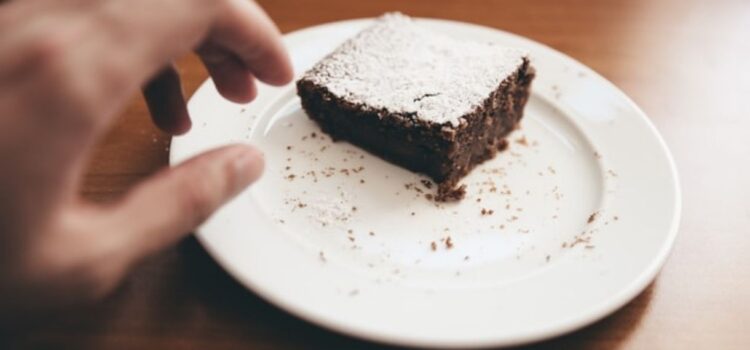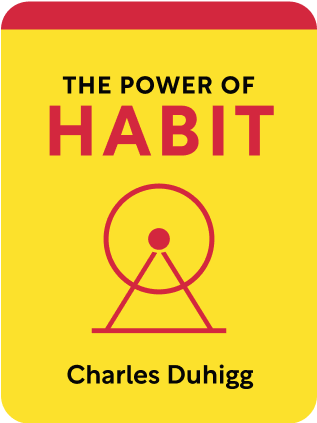

This article is an excerpt from the Shortform book guide to "The Power of Habit" by Charles Duhigg. Shortform has the world's best summaries and analyses of books you should be reading.
Like this article? Sign up for a free trial here .
Do you want to know how to change bad habits? What experiments can help you weed out your bad behaviors and replace them with better ones?
Bad habits are difficult to kick because they are literally encoded in your brain. According to Charles Duhigg, the author of The Power of Habit, all successful habit changes begin with a process of experimentation to uncover the specific cues and rewards that drive your habits. He suggests that you follow a four-step process that relies on identifying your routine and experimenting with different rewards so that you can effectively isolate your cue and understand why you engage in your habits.
Let’s explore the process in detail.
Step 1: Write Down Your Habit-Driven Routine
The routine is the automatic behavior pattern that surrounds the habit you want to change. Duhigg suggests that you detail every step of the routine from beginning to end, even the steps you think aren’t important.
For example, you work from home and have a habit of drinking too much coffee. You want to change this because you’re having problems sleeping at night. Your entire routine might look like this: You get up from the desk, walk to the kitchen, put on the coffee machine, play with your dog in the garden for a few minutes, take a bathroom break, make your coffee, and then go back to your desk and drink your coffee.
(Shortform note: Not all habits have a clear-cut routine like the one described above, especially if they’re emotional rather than behavioral. For example, if you habitually feel anxious before you need to drive somewhere, it’s easy to pinpoint driving as a high-anxiety situation. However, you may feel low-level anxiety throughout your day in a number of other situations. This makes it difficult to define a specific start and endpoint for the routine that surrounds your habitual anxiety. In The Craving Mind, neuroscientist Dr. Judson Brewer suggests building self-awareness through mindfulness techniques such as meditation to help develop conscious awareness of the specific routines around your emotional habits.)
Step 2: Switch Out Rewards to Discover Your Craving
During this step, Duhigg suggests that each time you recognize that you’re about to engage in your habit, avoid acting out the automatic routine. Instead, change the routine so that it has a new reward. This will help you to figure out what part of your routine you’re truly craving. Is it the reward you’ve habitually turned to, or is it something else?
Each time you perform this experiment with a new reward, write down the first three words that come to mind—this will encourage you to consciously acknowledge your thoughts and feelings (for instance, are you still feeling unsettled and like your craving is unfulfilled?). Then, set an alarm for 15 minutes and, when it goes off, ask yourself whether you still feel the craving. If you’re not, your new reward satisfies your true craving—and you can discover what that craving is by considering what need the reward fulfills.
(Shortform note: According to Gretchen Rubin, author of The Happiness Project, Duhigg’s method of changing the routine and adding a new reward forces your brain to step out of autopilot mode and increases your awareness of how you feel. This process, coupled with writing down three words, encourages you to think about why you’re engaging in your habit, the feelings you’re chasing or trying to avoid, and your justifications for sticking with this habit. This awareness makes it much easier for you to avoid falling into your habitual routines.)
Let’s explore how you could change the reward and complete this step for the coffee-drinking habit outlined in Step 1.
| Experiment 1 | Experiment 2 | Experiment 3 | |
| Reward | Eat a cookie. | Drink some water. | Play with your dog and drink some water. |
| New routine (instead of drinking coffee) | You grab a cookie and take it back to your desk. | You take a glass of water back to your desk. | You play with your dog for a few extra minutes and take a glass of water back to your desk. |
| Three notes | Yuk, tired, guilty | Bored, fed up, gggrrrr | Good, funny, clear |
| Does the craving still exist? | Something’s missing. | You want to get up from your desk but are not sure if you want coffee. | You forgot about the coffee. |
It turns out you just wanted to relax, forget about work, and give your dog some affection: You didn’t really crave the coffee itself.
Obviously, this example simplifies the process. Figuring out what cravings fuel your habits could take multiple experiments over the course of many weeks. Duhigg suggests that you continue to perform these experiments until you find a new routine that feels satisfying to you.
| Substitute Rewards Can Have Negative Side Effects Many addiction therapists recommend Duhigg’s strategy to simply replace the reward that you’re craving. However, some therapists believe that this method can have negative side effects, especially when you focus more on avoiding the habit you seek to change and less on what type of habit you replace it with. They explain that when you deny yourself the reward that you’re craving, you feel like something’s missing. You attempt to fill this void by taking on unproductive habits that induce the same dopamine high. This explains why ex-smokers often turn to overeating, ex-alcoholics turn to marijuana, or ex-binge-eaters turn to shopping. Further, therapists warn that even positive substitutions such as exercise or work can have negative effects if you develop unhealthy compulsive behaviors as a means to maintain your dopamine high. They suggest that learning how to manage the thoughts and feelings that underlie your cravings empowers you to make beneficial decisions, and prevents you from lapsing into substitute habits that may do more harm than good. |
Step 3: Use Categories to Identify Your Cue
The purpose of this step is to figure out exactly what’s triggering you to engage in your habit. Since you’re exposed to so much information and stimuli at any given time, it might be hard to narrow this down. However, Duhigg claims that all cues fit into one of five categories: location, time, emotional state, other people, and what’s happening immediately before you engage in the habit. Consequently, he argues that you can isolate the cue to your habit by asking yourself the following questions the next time you feel a craving:
- Where are you?
- What time is it?
- What’s your emotional state?
- Who else is around?
- What just happened?
Continuing with the coffee example, after asking yourself these questions during the course of a week, you discover that your coffee cravings commonly occur when you’ve been sitting at your desk for over 90 minutes, feel bored, and have difficulty concentrating.
| Not All Habits Have a Clear Cause and Effect Relationship Duhigg’s method of categorizing cues into five categories seems to work well for habits that have a clear cause and effect relationship: for example, smokers who only smoke when taking a break from work or when out with friends, or shoppers who only make purchases on their lunch breaks. These habits play out at specific times or in particular locations and it’s relatively simple to identify their triggers. However, it may seem that Duhigg’s method doesn’t work so well for the habits that people compulsively engage in throughout the day, such as chain-smoking, constant snacking, nail-biting, or anxious thinking. It’s difficult to track and correlate the causes of something you unconsciously engage in. But psychologists argue that, at their root, these compulsive behaviors are an attempt to relieve underlying anxieties or other negative emotions. Consequently, they argue that all of Duhigg’s categories help you to track the impact of different situations and people on your emotional state, providing clues about why you feel like you need to engage in your habit. For compulsive habits, carry a pen and a small notebook pre-filled with Duhigg’s five questions—or install a habit-tracking app on your phone—so that whenever you catch yourself engaging in your habit, you can immediately take note of what’s happening around you and how it makes you feel. While you may not catch every instance of the habit, the details you do end up tracking will help you to develop conscious awareness of how your cravings fluctuate. This will make it easier to disentangle the subtle cues that trigger your habit. |
Step 4: Head Off Temptation
Once you’ve completed your experiments and defined the cue, routine, and reward components of your habit, Duhigg suggests that you make a plan to overcome any temptations you might feel to give in to your old cravings. This involves designing your cues to trigger new behavioral routines and cravings for the new reward to come—it could be as simple as removing the cue that triggers your cravings.
For example, you now know that you’re most likely to crave coffee when you’ve been sitting at your desk for over 90 minutes and have difficulty concentrating. You also know that playing with your dog and drinking a glass of water fulfills your need to take a break in the same way that drinking coffee did. Consequently, your plan involves setting a timer every 90 minutes so that you can regularly take breaks to play with your dog and drink water.
(Shortform note: James Clear (Atomic Habits) adds to Duhigg’s approach by suggesting that you not only remove the cues for your unwanted habits but also add cues for your new habits. He explains that an effective plan involves shaping the visual cues within your environment to encourage only the new habits you seek to adopt. Visual cues are the biggest instigators for action because they trick your brain into thinking that it’s more convenient to act on them—it’s convenient to drink water when there’s a glass of water on your desk. Consequently, for the coffee example, Clear’s plan would involve removing all cues related to coffee (your mug, French press, or coffee machine) and replacing them with a jug of water, a glass, and dog toys.)
With repetition, you’ll eventually create an entirely new automatic habit: The timer (cue) will signal that you’re about to receive a reward (playing with your dog, drinking water) and this will encourage you to engage in this new routine. Eventually, the timer and your new reward will become inextricably linked to create a new craving. As a result, this routine will become automatic, and your new habit will replace your old habit (drinking coffee).
(Shortform note: According to James Clear (Atomic Habits), your desired habits can only become automatic and replace your unwanted habits if you practice them at a rate of frequency that either matches or exceeds the rate you engaged in the habits you’re trying to replace. He explains that your current habits were formed from multiple repetitions over the course of many months or years. Every repetition strengthened the neural pathways underlying this habit and ingrained the automatic routine deeper into your brain. To weaken your brain’s reliance on the unwanted habit, you must repeat your new habit as frequently as possible to develop neural pathways that are just as strong.)

———End of Preview———
Like what you just read? Read the rest of the world's best book summary and analysis of Charles Duhigg's "The Power of Habit" at Shortform .
Here's what you'll find in our full The Power of Habit summary :
- The 3 steps to change your habits
- Why habits are at the root of success in football
- How social movements are just an expansion of habits from individuals to communities






